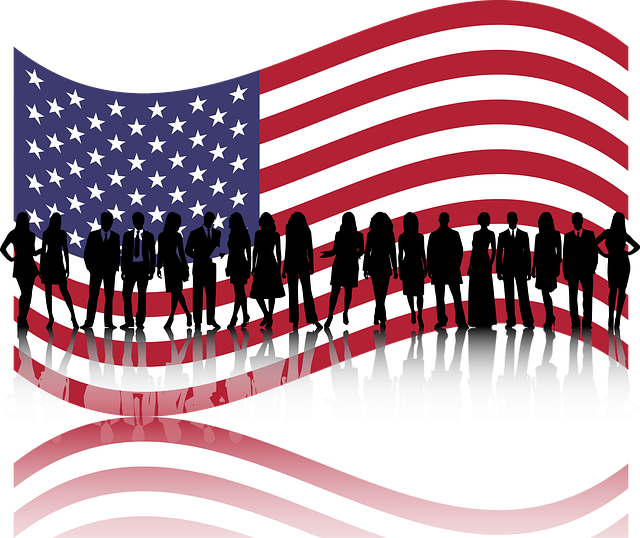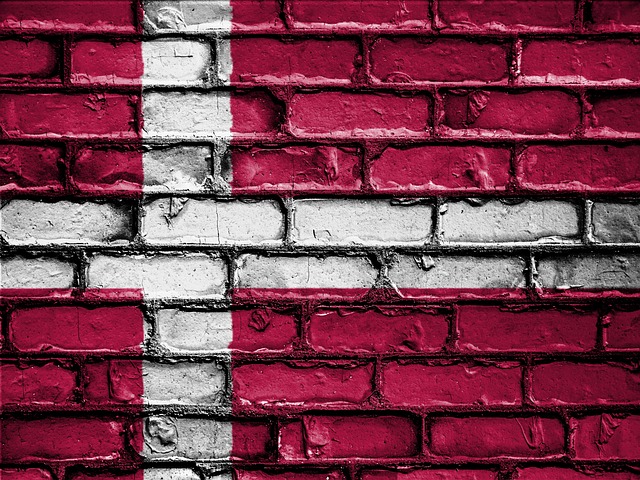The American Flag's "We the People" symbolism represents the core democratic principles of freedom, equality, and justice, fostering unity among diverse communities. Its design evolution reflects the nation's history and shared values, with 50 stars representing the states and 13 stripes commemorating the original colonies, symbolizing a powerful national identity. The flag serves as an iconic global symbol of democracy, inspiring movements worldwide and reminding Americans of their civic power and responsibility.
“The iconic American Flag, with its vibrant red, white, and blue hues, is more than just a symbol—it represents the very essence of We the People and the democratic ideals upon which the nation was founded. This article explores the profound symbolism and historical evolution of the flag, from its empowering message to its global impact. We delve into how it unifies a diverse nation and inspires democratic aspirations worldwide. By examining the American Flag, we uncover a rich tapestry of civic engagement and the enduring power of ‘We the People’.”
- The Symbolism of We the People: Empowering the Citizenry
- American Flag: A Visual Representation of Democracy
- Unity in Diversity: The Flag as a Unifier
- Historical Evolution: How the Flag Reflects American Values
- Design and Meaning: Decoding the Stars and Stripes
- The Flag's Global Impact: Inspiring Democratic Ideals
The Symbolism of We the People: Empowering the Citizenry

The phrase “We the People” etched onto the American Flag is more than just words; it symbolizes the very foundation of American democracy. This powerful statement empowers every citizen, reinforcing the idea that the government derives its authority from the consent of those it governs. By invoking “We the People,” the flag serves as a constant reminder of the collective power and responsibility inherent in a democratic society.
The symbolism goes beyond individual rights; it fosters a sense of unity and shared purpose. It encourages citizens to participate actively in their government, to engage in the political process, and to stand up for what they believe in. The American Flag, with its “We the People” inscription, becomes an iconic representation of the diverse voices that make up the nation, bound together by a common commitment to liberty and justice for all.
American Flag: A Visual Representation of Democracy

The American Flag, with its vibrant red, white, and blue stripes and 50 white stars, serves as a powerful visual representation of American unity and democracy. Each element of the flag carries profound symbolism – the 13 original stripes represent the colonies that declared independence, while the 50 stars signify the 50 states that make up the Union. More significantly, the flag embodies the ideals enshrined in the nation’s founding document, “We The People.” It stands for freedom, equality, and the collective power of citizens to shape their government.
The American Flag acts as a tangible reminder of the democratic principles that have shaped the nation since its inception. Flying proudly at public buildings, homes, and gatherings, it fosters a sense of shared identity and patriotism among Americans. When displayed, the flag encourages reflection on the rights and responsibilities inherent in living in a democracy – a democracy built upon the belief in “We The People.”
Unity in Diversity: The Flag as a Unifier

The We the People ideal is a cornerstone of American democracy, emphasizing unity through shared values and principles. This concept is beautifully embodied in the American Flag, a powerful symbol that transcends our diverse backgrounds and experiences. No matter their race, religion, or origin, every American can find a connection to the flag’s vibrant colors and stars. It serves as a visual reminder of our collective identity, fostering a sense of unity among the vast and varied population.
The design of the flag, with its red, white, and blue hues, carries a profound message. White signifies purity and innocence, red represents courage and sacrifice, while blue embodies vigilance, perseverance, and justice. These colors, together, encapsulate the spirit of America—a nation born from revolution and built on the principles of liberty and equality. As a unifying force, the flag becomes a common ground for all citizens, fostering a shared sense of pride and belonging, reinforcing the bond that holds We the People together.
Historical Evolution: How the Flag Reflects American Values

The We the People ethos, enshrined in the U.S. Constitution, forms the cornerstone of American democracy and unity. As reflected in the American Flag, this ideal has evolved historically to encapsulate the nation’s values and aspirations. The initial designs, with simple symbols like the stars and stripes, represented the nascent union’s desire for freedom and independence. Over time, as the country grew and faced new challenges, so did its flag. Each additional star, symbolizing a new state joining the union, underscored the evolving unity among diverse communities, preserving the democratic principles upon which the nation was founded.
The design changes have not only incorporated new states but also served as visual statements of pivotal moments in American history. For instance, the addition of the blue field and 48 stars after World War II symbolized victory, while the current 50 stars represent the 50 states, unifying the nation under a common set of democratic ideals. Thus, the American Flag stands as a powerful symbol, encapsulating the journey from a fledgling republic to a diverse democracy, where We the People remain at the heart of its governance and unity.
Design and Meaning: Decoding the Stars and Stripes

The Stars and Stripes, commonly known as the American flag, is a powerful symbol of unity and democracy in the United States. Its design, with 50 stars representing the 50 states and 13 stripes symbolizing the original 13 colonies, encapsulates the nation’s history and values. Each element tells a story—the stars, a vibrant tapestry of diversity, represent the collective strength and freedom of We the People. The stripes, bold and distinctive, recall the struggle for independence and the principles upon which the nation was founded.
Decoding the flag is like exploring a national symphony, where every note (or stripe) contributes to a harmonious whole. It serves as a constant reminder of the shared ideals that bind Americans together—liberty, equality, and justice. When flown proudly, whether at homes, government buildings, or international embassies, the American flag becomes a universal symbol of democracy in action, welcoming all who embrace its values.
The Flag's Global Impact: Inspiring Democratic Ideals

The We the People spirit embodied in the American Flag has resonated beyond U.S. borders, inspiring democratic movements worldwide. Its vibrant colors and symbolic stars represent more than just geographical boundaries; they stand for universal ideals of freedom, equality, and justice. The flag has become a global icon, waving as a symbol of hope and resistance in various countries striving for democracy and self-determination.
From rallies demanding civil rights to protests against authoritarian regimes, the American Flag has often been adopted as a unifying beacon. Its sight ignites a sense of solidarity among those seeking democratic reforms, reminding them that their struggles echo the foundational fight for independence and liberty enshrined in U.S. history. This global impact underscores the enduring influence of American democracy and the values it upholds through its iconic symbol—the We the People American Flag.
